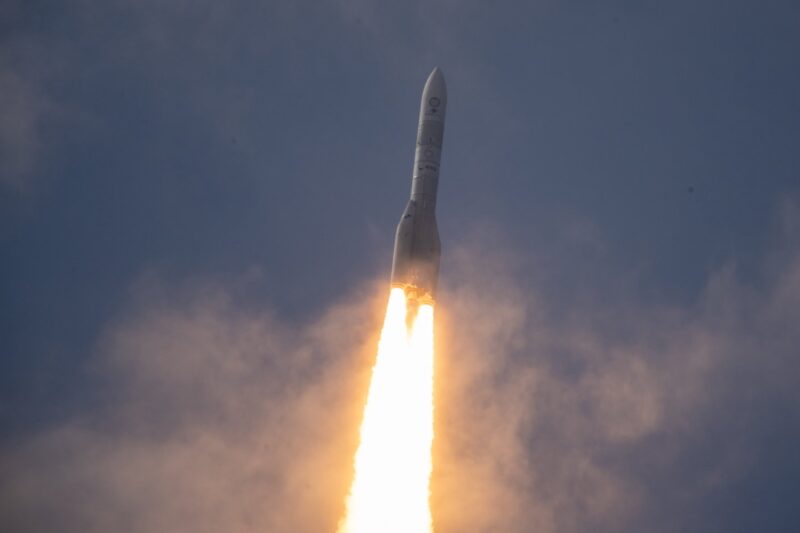Latest News

Ariane 6 makes its debut on July 9, 2024. Photo: European Space Agency, M. Pédoussaut
The Ariane 6, Europe’s new heavy-lift rocket, made its long-awaited debut in a successful launch on Tuesday, restoring Europe’s sovereign access to space launch.
Ariane 6 lifted off at 16:00 local time on July 9 from Europe’s Spaceport in French Guiana. The full mission lasted 2 hours and 40 minutes. The mission successfully deployed all satellites onboard, but there was an issue during the final tech demonstration phase that impacted two reentry capsules.
The rocket is the successor to the workhorse Ariane 5 rocket and has been in development since the early 2010s. It was originally supposed to launch in 2020 but faced numerous delays, leaving Europe without a heavy-lift launcher after the final Ariane 5 flight in July of 2023. In the interim, SpaceX launched some of Europe’s flagship satellites, including a Galileo mission in April.
“A completely new rocket is not launched often, and success is far from guaranteed. I am privileged to have witnessed this historic moment when Europe’s new generation of the Ariane family lifted off – successfully – effectively reinstating European access to space,” commented ESA’s Director General Josef Aschbacher.
ArianeGroup is the main contractor that designed the Ariane 6 rocket. The European Space Agency (ESA) operated the demonstration flight, designated VA262. French launcher Arianespace will operate the rocket commercially.
The Ariane 6 first stage features an upgraded Vulcain engine from the Ariane 5. The second stage uses the Vinci engine which was designed for this rocket.
Vinci successfully fired about 7 minutes and 50 seconds into the mission, and re-fired 56 minutes into the mission, changing the rocket’s orbit from elliptical to circular at an altitude of 580 km. This allows Ariane 6 to inject satellites straight into Geostationary Orbit.
The mission carried a number of satellites, deployers and experiments. The first reignition burn deployed three satellites; OOV-Cube, Curium One and Robusta-3A, and activated two onboard experiments, YPSat, and Peregrinus. Following this, a second separation command deployed 3Cat-4, ISTSat, and GRBBeta. A third separation command deployed CURIE and replicator.
However, there was an issue in the final stage of the mission, which was a technical demonstration testing how the upper stage behaves in microgravity. Martin Sion, CEO of ArianeGroup, explained the issue in a post-launch press conference.
Sion said at that point in the mission, the auxiliary propulsion unit (APU) reignited and then stopped. This caused the upper stage Vinci engine to not restart and the mission ended passively. Two reentry capsules, The Exploration Company’s Nyx Bikini and the SpaceCase SC-XO1 capsule were not released.
Sion said it is not known at this point why the APU stopped. ArianeGroup will assess the issue when all of the data is available.
Arianespace CEO Stephane Israel confirmed this issue does not impact starting commercial service with the second launch. The next Ariane 6 mission is planned for launch this year. The rocket’s future launch list includes Galileo satellites, Optus-11, Hellas Sat 5, Intelsat-45, and Amazon Kuiper missions.
European space leaders applauded Europe regaining its own launch access.
“With this first successful launch by Ariane 6, Europe has finally recovered its capacity to access space,” CNES CEO Philippe Baptiste said in a statement. “Europe can be proud of its space program, Europe can be proud of its knowledge and expertise. Together, let’s prepare the future of launchers and space.”
This story was updated after initial publication with information about the issue in the tech demo phase.
Stay connected and get ahead with the leading source of industry intel!
Subscribe Now